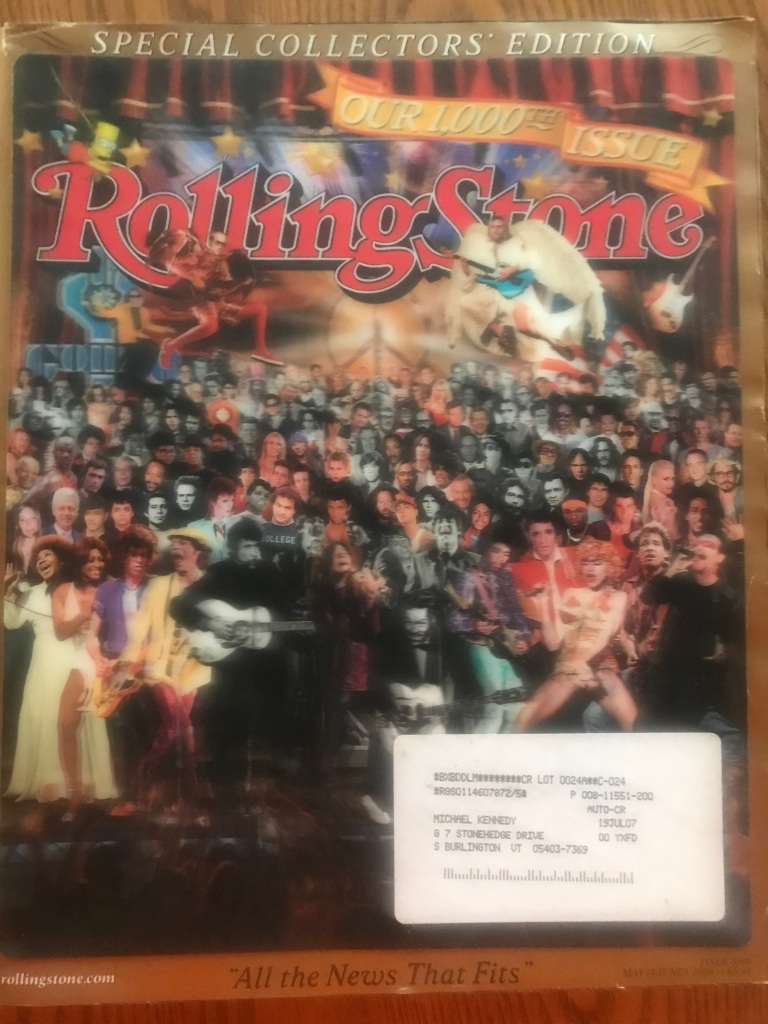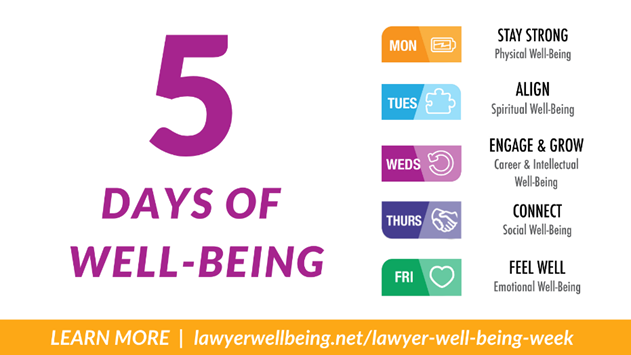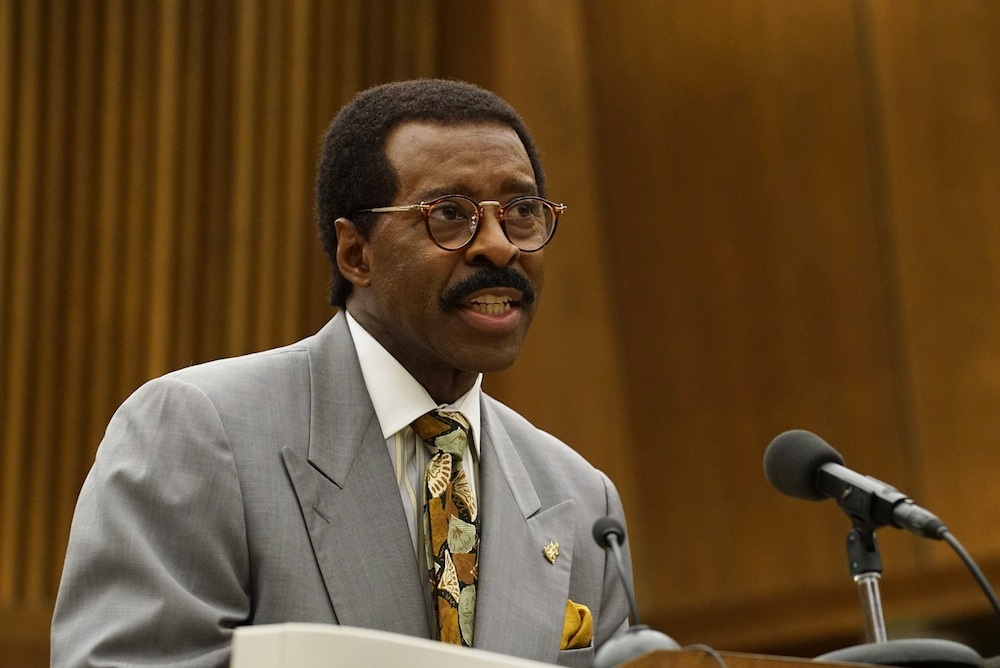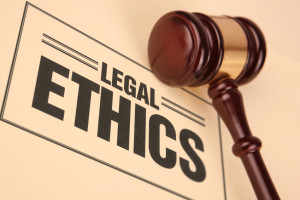Happy sunny Friday and welcome to the 297th legal ethics quiz!
I was bored the other night. Nothing on tv interested me, it was too early to go to bed, and the book I intend to read next had yet to arrive from Amazon.[1] So, I grabbed a magazine that I didn’t even really know I had. I mean, I knew there were some magazines on my coffee table, but until I rifled through them, I couldn’t have told you which ones were there.
Turns out, I snagged the 1000th issue of Rolling Stone. The issue includes dozens of vignettes about prior covers. Leafing through sent me on a fantastic trip down memory lane that, to the say least, cured my boredom. Eventually, I thought to myself “Self, I’m glad you bought this and saved it!” Then, looking closer, the mailing label made me realize I hadn’t bought it – I was a subscriber!
So, I looked through the others I’d saved. There were three, the oldest being RS668: Pearl Jam.[2] This told me that I was a subscriber for at least 14 years!
I don’t remember the last issue I received in the mail. I assume I canceled the subscription once I learned I could just read online. In a way, this made me sad. While I never collected Rolling Stone magazines, I’d clearly saved some. And, as I said two paragraphs ago, going back through them was fun! Fun in a way that reading archived versions isn’t. It made me wish I’d never stopped subscribing.
In turn, this reminded me of the one magazine that, in fact, I used to collect: Sports Illustrated. I first subscribed to SI when I was in high school. Probably 1982 or 1983. I LOVED the covers and intended to save them forever.
Around the same time, I had a paper route. That’s right – The First Brother and I were JIMs: Junior Independent Merchants who delivered The Burlington Free Press. I don’t remember his name, but one of my customers learned of my interest in Sports Illustrated. He had hundreds, going back to well into the 1970s. He let me have them! For years, my containers full of SIs resided either with me or in my mom’s basement. They survived until 2018 when, instead of joining me at The Garage Bar, they made their final journey . . . to the recycling facility.
This too made me sad. Why hadn’t I kept them? Even if I only looked through them once a year?.
It made me wonder what else I had stopped collecting that, someday, I’ll wish I had continued to save. I didn’t spend much time “wondering,” quickly remembering that I’ve never been much of a collector or saver. Really, there are only 2 things I’ve saved: ticket stubs from sporting events and race bibs.[3]
Collecting the former sort of died of its own volition with the advent of digital tickets and Apple Wallet. I suppose I could screen shot them, but it’s not the same. I like the feel of going through actual tickets. Tickets that were much more than bar codes. For example, I miss adding tickets like these to my collection:
Which leaves race bibs as the only thing that I continue to save/collect. I love them! After each race, I scrawl a few memories of the race on the bib and then hang it with the others. Every now and then I find myself looking at them, thanking myself for making the notes, and, as I did with Rolling Stone Issue 1000, enjoying the trip down memory lane.
May paper race bibs forever be a thing!
Anyhow, I didn’t mean for this intro to turn wistful or melancholy. Rather, I intended for it to do what my favorite Friday posts do: cause readers to share their personal stories with me.
My guess is that many of you collect something. I’d love it if you shared that interest with me. I might even follow-up with a post that, without naming names, lists the “things” that we save or collect.
Onto the quiz!
Rules
- None. Open book, open search engine, text-a-friend.
- Exception: Question 5. We try to play that one honestly.
- Unless stated otherwise, the Vermont Rules of Professional Conduct apply.
- Please do not post answers as a “comment” to this post.
- E-mail answers to michael.kennedy@vtcourts.gov
- Team entries welcome, creative team names even more welcome.
- I’ll post the answers & Honor Roll on Monday,
- Please consider sharing the quiz with friends & colleagues.
- Share on social media. Hashtag it – #fiveforfriday.
Question 1
A lawyer has a duty not to disclose “information relating to the representation of a client.” A comment to the confidentiality rule states that the rule applies:
- A. only to information covered by the attorney-client evidentiary privilege.
- B. only to information that, if disclosed without client consent, would be detrimental or embarrassing to the client.
- C. A & B.
- D. not only to matters communicated in confidence by the client but also to all information relating to the representation, whatever its source.
Questions 2
What does the rule say?
“A lawyer shall ____________
- A. abide by the client’s decisions about the means by which the client’s objectives are to be accomplished.”
- B. reasonably consult with the client about the means by which the client’s objectives are to be accomplished.”
- C. exercise reasonable judgment when choosing the means by which the client’s objectives are to be accomplished.”
- D. Trick question. There is a gap in the rules that, until filled, leaves this issue unaddressed.
Question 3
The general rule is that a lawyer:
- A. may pay anyone for a client referral.
- B. may only pay for referrals made by other lawyers.
- C. shall not give anything of value to a person for recommending the lawyer’s services.
- D. C, and there are no exceptions to the general rule.
Question 4
In addition to being subject to the rule that prohibits unreasonable fees, what do divorce lawyers and criminal defense lawyers have in common with respect to the rules governing the fees that they charge?
Question 5
With Rolling Stone so prominent in the intro, I did some research. Admittedly, some very quick research. I’m not positive that I’m correct, but I believe that the issue dated June 12, 1980, was the first to feature a lawyer on the cover. The cover story was not about the person’s work as a lawyer, but the person’s “struggle” as a candidate for national office.
Twenty-one years before appearing on the RS cover, the person graduated from the University of Virginia Law School. The person’s first job as a lawyer was as an assistant district attorney in Suffolk County, Massachusetts. The person didn’t work as a prosecutor for long. Two years later the person started a new job, one in which they remained until 2009.
The person was the younger sibling of two incredibly famous brothers. Let’s call the brothers A and B.
B was also a lawyer. A was not. The legal job with which B is most associated is one in which he worked as part of A’s inner circle.
I am 100% certain that every person reading this question has heard of numerous members of the person’s family, including one quite recently!
Name the person who, I think, was the first lawyer ever to appear on the cover of Rolling Stone.
PS: don’t get lawyerly on me. If it turns out that another lawyer appeared on the cover of Rolling Stone before this one did, Question 5 can be changed to “who is the person Mike described in Question 5?”
[1] Yes, I prefer actual books. No e-reading for me.
[2] I’d also saved RS683: Kurt Cobain and RS682: Melrose Place. Melrose Place is criminally underrated, and it bothers me to no end that, while a different genre, it’s not held in the same regard as Friends, a show that, in my opinion, is the most overrated in the history of not only rating shows, but of rating anything.
[3] The First Brother and I collected baseball cards as kids. Unlike my SIs, my baseball cards did not accompany me on my various moves. Instead, I left them in the basement of my mother’s house. One day, early in my legal career and not thrilled with it, I decided to scour my baseball cards, hopefully to find one that was worth millions. Oddly, unlike much of the other “stuff” that we stored in our mom’s basement – for example, my SIs – the baseball cards were gone. When asked, my mom feigned ignorance. I didn’t press the issue. If I had, my guess is that she’d have told me that my pet turtle who “ran away” while we were on vacation when I was about 10 had returned to get the baseball cards and take them to his new place. See, this post and footnote 4.

















